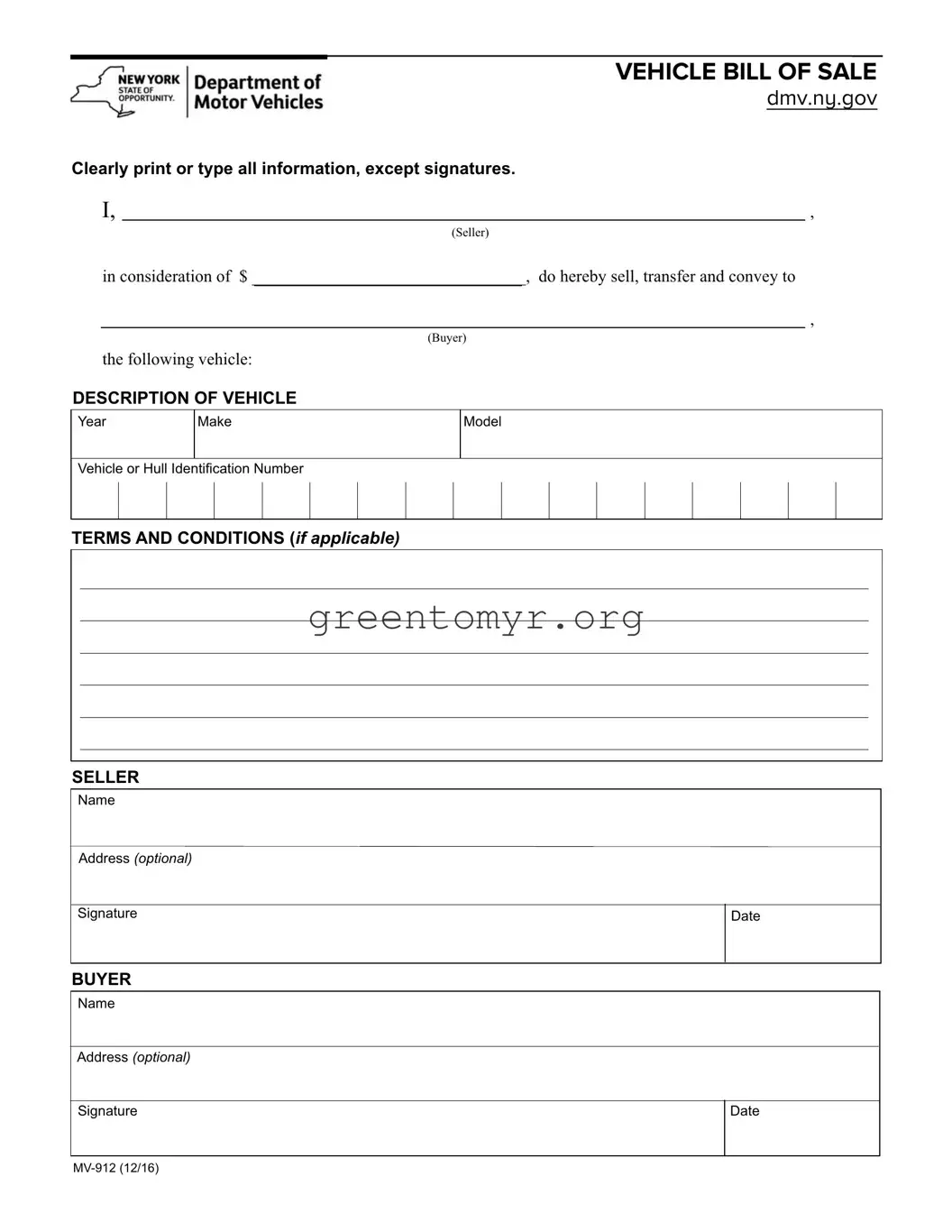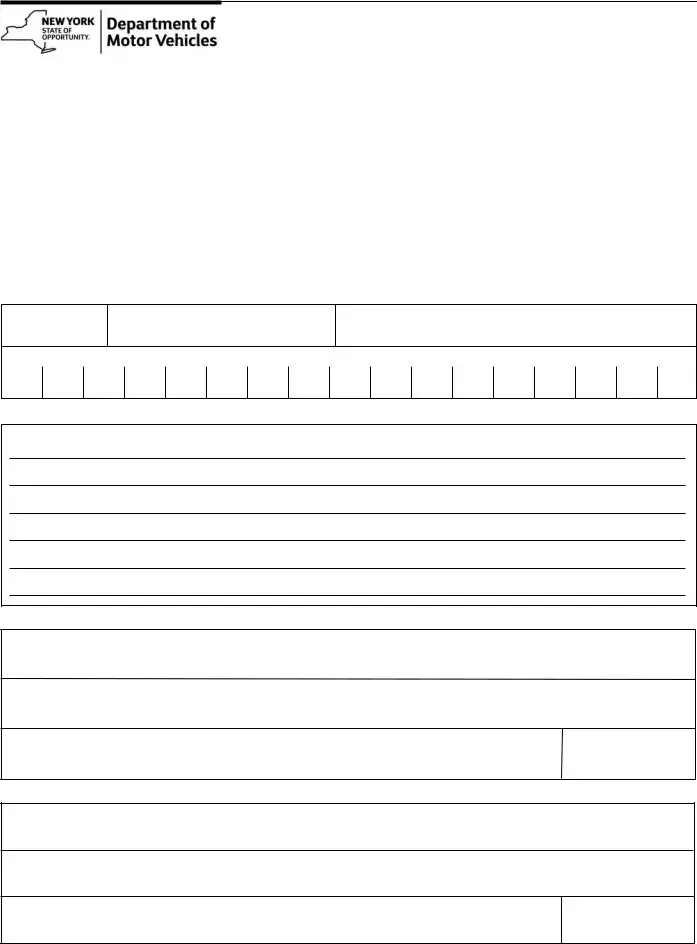Filling out the BOS MV-912 form can seem straightforward, but it’s easy to make mistakes that can lead to delays in processing or even rejection of your application. One common error is providing inaccurate personal information. It’s crucial that your name, address, and contact details are correct. A small typo can create significant challenges later on.
Another frequent mistake is missing required signatures. Each section of the form may need a signature, and forgetting one can result in the form being deemed incomplete. Remember, forms often need to be signed by the applicant and sometimes require additional signatures from witnesses or co-signers.
Additionally, many people forget to double-check their form for proper dates. Whether it's a license expiration date or the date of the transaction, incorrect dates can lead to unnecessary complications. Always confirm that the dates align with the information provided elsewhere on the form.
Some applicants fail to include necessary documentation along with the MV-912 form. Supporting documents can include identification, proof of residency, or other relevant paperwork. Without these documents, your application might be delayed or rejected outright.
Not reading the instructions thoroughly is another mistake often made. The form usually comes with guidelines detailing what is needed in each section. Skipping over these instructions can lead to misinterpretation or omission of important information.
People sometimes rush through the form, which can lead to hasty errors. Taking the time to fill out the form carefully can help catch those pesky mistakes before submission. Rushing can result in legibility issues, which can complicate the review process.
Another issue is miscalculating fees or ignoring payment instructions. Ensure that payment methods are clear and the correct amount is submitted. Misunderstanding these details can cause your form to be rejected and returned.
When individuals use correction fluid or write over mistakes on the form, it can create confusion for the reviewer. It’s better to start fresh rather than muddle through corrections. A clean, clear form is much easier to process.
Lastly, waiting until the last minute to submit the form can lead to stress and oversights. Give yourself plenty of time to complete everything accurately. Submitting early allows for any potential issues to be addressed without the pressure of deadlines.

